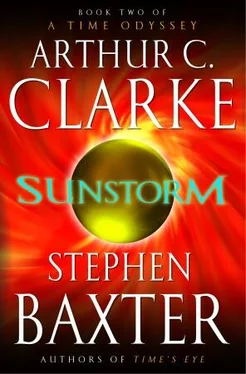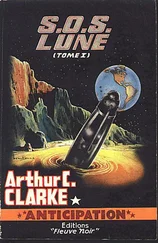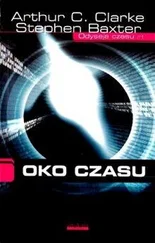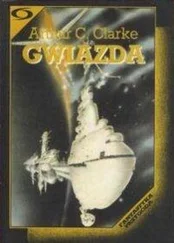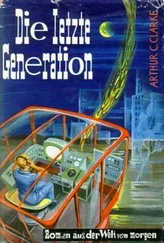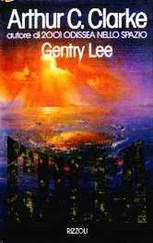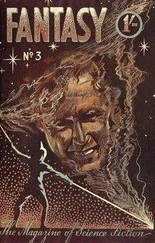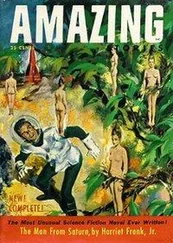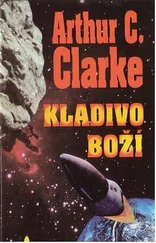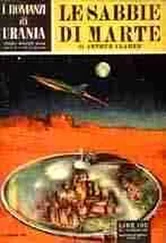Those who watched had eyes sensitive to colors for which there are no words in human languages. But they watched nevertheless: they watched everything and everywhere, patiently, indefatigably. And they noticed Earth’s violent birth.
They watched what followed too: the gathering of oceans from comet water, a brief age of chemical churning, the startlingly rapid rise of simple life-forms, the more sluggish progress toward complexity, and at last a glimmer of intelligence. It was a familiar story in its broad thrust, only the details differing from world to world.
But those who watched did not regard this as “progress.”
In an ancient conclave, at levels of discourse no human mind could have comprehended—and despite some dissension—the gravest of decisions was made.
And a weapon was selected.
A sterilizing agent.
*********
______
How do you move a planet? There are many ways, but the method used at Altair was well within humanity’s understanding.
It was that rogue Jovian’s very perturbability that made it so useful. Since the 1970s human engineers had been using gravitational “slingshots” to boost their spacecraft on their way. A spacecraft such as Voyager, say, could be “bounced” off Jupiter’s gravity well—and, like a Ping-Pong ball rebounding off the windshield of an eighteen-wheeler truck, if you got the angles right the spacecraft would be hurled away with hugely increased momentum. The space engineers had become expert at this technique, finding ways to use ever more elaborate chains of slingshots to tap into the solar system’s store of energy and momentum and so to reduce the amount of rocket fuel they needed to loft into space.
Because Jupiter was some ten trillion trillion times as massive as Voyager, such encounters had not disturbed the target planet significantly. But if a world comparable in mass to Jupiter had followed Voyager ’s trajectory, both incoming and target worlds would have been flung away in new directions.
And here was the principle: to use gravitational slingshots to move worlds.
A single impulse would be difficult to arrange, and wasteful, for much energy would have been dissipated in tidal distortions. But you could use a stream of asteroids to shift the much mightier mass of a planet without such undesirable consequences.
And smaller rocks yet could be used to deflect the asteroids in the first place. A hierarchy of encounters could be arranged, with the tiniest of initial deflections—like a pebble thrown into a pond—causing a sequence of ever more immense disturbances. It helped that the mechanics of many-body gravitational systems were intrinsically chaotic and so sensitive to small disturbances.
It would take planning, of course, to make this multiple cannon shot pay off. But it was only a question of orbital mechanics. It was efficient too, with very little energy wasted. To those to whom economy was a guiding principle, it was a method whose elegance appealed.
The pebble was thrown.
*********
______
It took a thousand years for the cascade of interactions to shift the Jovian from its elongated orbit: no more would it trouble the tormented inner worlds of Altair. It would take another thousand years for the Jovian to cross the gulf of space from one stellar sand grain to the next. But that was of no concern. This was a long game.
When it was done, attention was turned away. Those who had intervened would watch the dйnouement; they believed that was their bleak duty. But there was time enough to be ready for that.
On Earth, humans built ziggurats in veneration of their sun, which they still imagined to be a god. And yet their fate was already sealed. Or so those who had intervened believed.
Siobhan arranged to meet Bisesa in the London Ark, the old zoo in Regent’s Park.
She had to drive down from Liverpool to do it. She had been up there to visit the new Eurasian Prime Minister in his Bunker, as everybody called it, a huge new underground governmental center implanted, controversially, in the massive concrete crypt of the grand old city’s Roman Catholic cathedral.
Traveling down the M1, Siobhan hit her first roadblock as she passed St. Albans, still thirty kilometers or more from central London. The journey back had already taken eight hours. A couple of years ago, in a fast smart car with no upper speed limit, it might have taken three. But since then London had become a fortress.
On this hot day in September 2041 a series of cordons had been put in place around the capital. The outermost fence was a barrier of roadblocks, wire fencing, and tank traps that ran from Portsmouth on the south coast, up through Reading and Watford, and past Chelmsford to the east coast. The Navy controlled access from the sea and the river just as tightly, and there were constant RAF patrols in the air overhead. Even at this first checkpoint it took Siobhan an hour to queue to have her ident chip, retinas, and vehicle chip scanned: she might still have the ear of a Prime Minister, but nobody got a free pass in these increasingly paranoid times.
It had to be so. With seven months left before the storm, the problem of refugees from the smaller towns and the countryside was already significant. London had been Britain’s center of gravity since 1066, when the Norman Conqueror had exerted his brutal control over the old Saxon kingdom from his new Tower. Everybody knew that it would be to London, in the final days, that half the population of southern England would flee, as if drawn into a great drain. Hence the layers of barriers.
As she waited, Siobhan saw a plume of thick black smoke rising above the city of St. Albans. Aristotle told her that it was the mark of a vast bonfire, the centerpiece of a ferociously wild party on the site of the long-erased Roman city of Verulamium. As time went on, most people continued to behave reasonably well, to the authorities’ general relief. But there were some who called themselves, gloomily, the Lords of the Last Days—and they sported and partied as if they believed it.
The St. Albans fire was being burned in defiance of all environmental protection laws, of course, but there were plenty who no longer cared about that, not if everything was going to be fried in seven months’ time anyhow. The same thing was happening on a wider scale, as oil wells and gas fields were being pumped dry, and noxious substances pumped carelessly into the air and the seas.
Frozen sleepers were another symptom of the lunatic fringe.
Up in Liverpool she had delivered a report on the impact of the new craze in the United States for “hibernacula,”—huge underground vaults inside which the rich were having themselves cryogenically stored. These refugees from reality were seeking to skip over the sunstorm and escape into a better future. The hibernacula were becoming ever more popular despite medical advice that the freezing process probably wouldn’t work successfully—and nobody could guarantee an uninterrupted power supply through the sunstorm anyhow, so that the big day might result in an unfortunate defrosting. Besides, even if the system worked technically, where was the morality in escaping the present and leaving others to clean up the mess, then “returning” when the worst was over to reap the rewards? The “cryonauts” would surely not be welcomed, even in the most optimistic scenarios. And Siobhan had projected gloomily that if things went pear-shaped—if civilization fell apart despite the shield’s protection—the hibernacula would most likely serve the starving survivors as cellars of thawing meat …
Such craziness captured media attention, but was fortunately still rare. And while these last days saw much foolishness and venality, there was some dignity too. More people were trying to save what they cherished than to smash things up in a final frenzy; projects such as the London Dome were flooded with volunteer workers. Many people were turning, predictably, to religion for solace, but few became fanatics of the kind who had killed Miriam Grec. Most prayed to their gods with quiet gravity, in the austere beauty of cathedrals, mosques, and temples, or simply in the privacy of their own hearts.
Читать дальше
